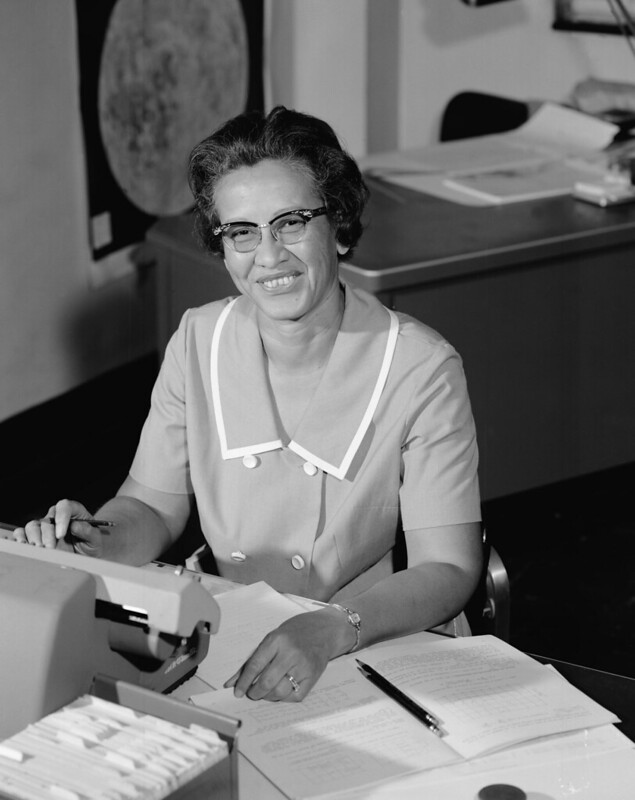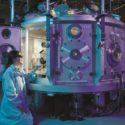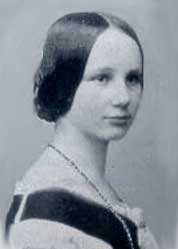From Ada Lovelace prophesizing the computer age in the 1800s, to Katherine Johnson’s groundbreaking work with NASA helping astronauts into space, we look at the lives of five women who played instrumental roles in shaping modern technology.
1. Ada Lovelace
Born Augusta Ada Byron in 1815, Ada Lovelace was the child of the famous English poet Lord Byron and Lady Annabella Milbanke. Ada’s mother insisted she received private tutoring, including mathematical studies, which was an unusual education for girls at the time. Lovelace met Charles Babbage, who built the first mechanical computer, at a party in 1833, and the two became correspondents.
In 1843, Lovelace agreed to translate a paper by engineer Luigi Menabrea on Babbage’s Analytical Engine. In the process, she added extensive notes—so much so that, by the time she had finished, it was significantly longer than the original paper.
Lovelace’s notes included the first recorded description of a sequence of operations to solve certain mathematical equations, earning her a place in history as the “first programmer.” She is also known as “a prophet of the computer age” for her speculation that the Analytical Engine might one day be able to “act upon other things besides number” and even compose music.
2. Karen Spärck Jones

British computer scientist Karen Spärck Jones was born in Yorkshire, England, in 1935. She developed the concept of inverse document frequency, an innovation that underlies virtually all search engines in use today.
Karen Spärck Jones studied at Cambridge, and later returned to the university to take up a post in its Computer Laboratory. Her 1972 paper on inverse document frequency weighting in information retrieval revolutionized the computing industry.
She was the recipient of the Gerard Salton Award, the ACL Lifetime Achievement Award, and the British Computer Society’s Lovelace Medal. At the time of her death in 2007, she was a Fellow of the British Academy, the Association for the Advancement of Artificial Intelligence, and the European Association for Artificial Intelligence.
Every year, the British Computer Society presents a lecture in honor of Karen Spärck Jones. In 2019, over a decade after her death, the New York Times published her obituary in its “Overlooked” series dedicated to people who led remarkable lives, but whose contributions were overlooked in their time.
3. Adele Goldberg
Adele Goldberg was born in 1945 in Cleveland, Ohio. Of the many technological advancements she contributed to, perhaps the most well-known is Smalltalk-80. The Smalltalk-80 computer programming language contributed to the development of object-oriented programming, and introduced the concept of overlapping windows on display screens. This feature is integral to the Windows operating system.
Goldberg grew up in Chicago, Illinois. She attended the University of Michigan, graduating with a degree in mathematics, before studying at the University of Chicago, where she earned her master’s degree and PhD in information science.
Collaborating with American computer scientist Alan Kay, Adele Goldberg cowrote an article titled “Personal Dynamic Media,” a piece that predicted a world in which ordinary people would use handheld computers to exchange, edit, and redistribute personal media.
Goldberg has received numerous awards and accolades in recognition of her contributions to computer science, including a Lifetime Achievement Award from PC Magazine and a Fellowship from the Association for Computing Machinery. A collection of her working documents and reports are on display in the Computer History Museum in Mountain View, California.
4. Katherine Johnson

Katherine Johnson was born in White Sulphur Springs, West Virginia, in 1918. As an African American woman working in STEM during the mid-20th century, she faced prejudice and discrimination due to her gender and ethnicity. Today, however, she is recognized as a pioneer in space science and computing.
Always intellectually curious and brilliant with numbers, Johnson graduated from West Virginia State University with highest honors in mathematics and took a position teaching at a public school. When West Virginia began to integrate graduate education, Johnson was selected, along with two African American men, to attend West Virginia University. She was the first African American woman to do so.
Johnson went on to work in an all-Black computing department at the National Advisory Committee for Aeronautics (NACA), the organization that later became NASA.
She says that the launch of Soviet satellite Sputnik changed her life. The complex calculations she carried out for NACA’s 1958 paper, Notes on Space Technology, earned her a place at the core of the Space Task Group later that year, when NACA became NASA.
Johnson performed the trajectory analysis for the 1961 Freedom 7 mission, America’s first human spaceflight. She also provided complex calculations for the Friendship 7 mission, the country’s first orbital spaceflight, the following year. So confident was astronaut John Glenn in Johnson’s abilities that he refused to take off without Johnson double-checking the orbital computer’s calculations.
On Project Apollo, Johnson’s calculations helped synch the Lunar Lander and the Command and Service Module. She also worked on the Earth Resources Satellite and the Space Shuttle, as well as writing and cowriting 26 research papers.
In 2015, at age 97, Katherine Johnson received the Presidential Medal of Freedom, the highest civilian honor in the US, from President Obama.


 Joanna (Jo) Riley is an entrepreneur, investor, and advocate in technology, and is currently the CEO and Co-Founder of Censia. Jo has a highly experienced background in building and scaling companies, which she attributes to her deep passion for people and building technologies that allow people to be their best selves. She brings her wide knowledge of the industry to better transform the way enterprise companies hire talent. You can connect with Joanna Riley at @joannakiddriley on
Joanna (Jo) Riley is an entrepreneur, investor, and advocate in technology, and is currently the CEO and Co-Founder of Censia. Jo has a highly experienced background in building and scaling companies, which she attributes to her deep passion for people and building technologies that allow people to be their best selves. She brings her wide knowledge of the industry to better transform the way enterprise companies hire talent. You can connect with Joanna Riley at @joannakiddriley on